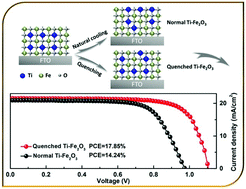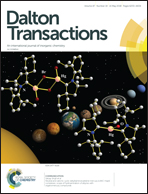A non-equilibrium Ti4+ doping strategy for an efficient hematite electron transport layer in perovskite solar cells†
Abstract
Non-equilibrium Ti4+-doped hematite (Ti-Fe2O3) is explored successfully as an electron transporting layer (ETL) material for planar perovskite solar cells, which were simply processed by quenching the ETL films at high temperature after thermal annealing. High-temperature quenching can fix Ti4+ dopants in the bulk lattices of Ti-Fe2O3 and suppress surficial TiOx segregations on it, which obviously increase the doping density and decrease surficial electron traps in Ti-Fe2O3 ETLs, thereby greatly improving their electron transport properties. Hence, the efficiency of planar perovskite solar cells with these desired Ti-Fe2O3 ETLs can be boosted to 17.85% along with the stabilized value of 17.05%, which is much higher than that of cells with Ti-Fe2O3 ETLs prepared by routine natural cooling and even the previous record efficiency of planar cells based on Fe2O3 ETLs. Our work contributes to enriching the ETL systems of perovskite solar cells and offers a promising candidate for efficient and photo-stable cells.



 Please wait while we load your content...
Please wait while we load your content...